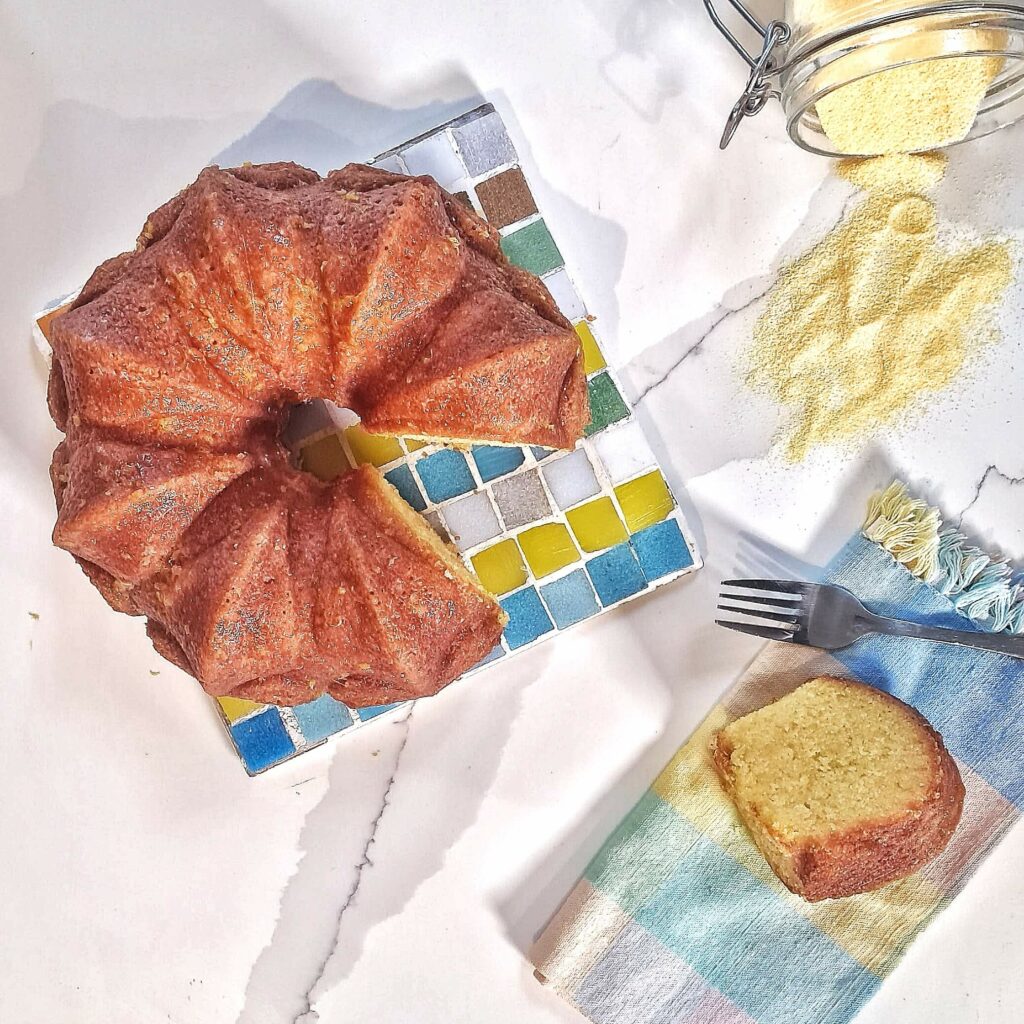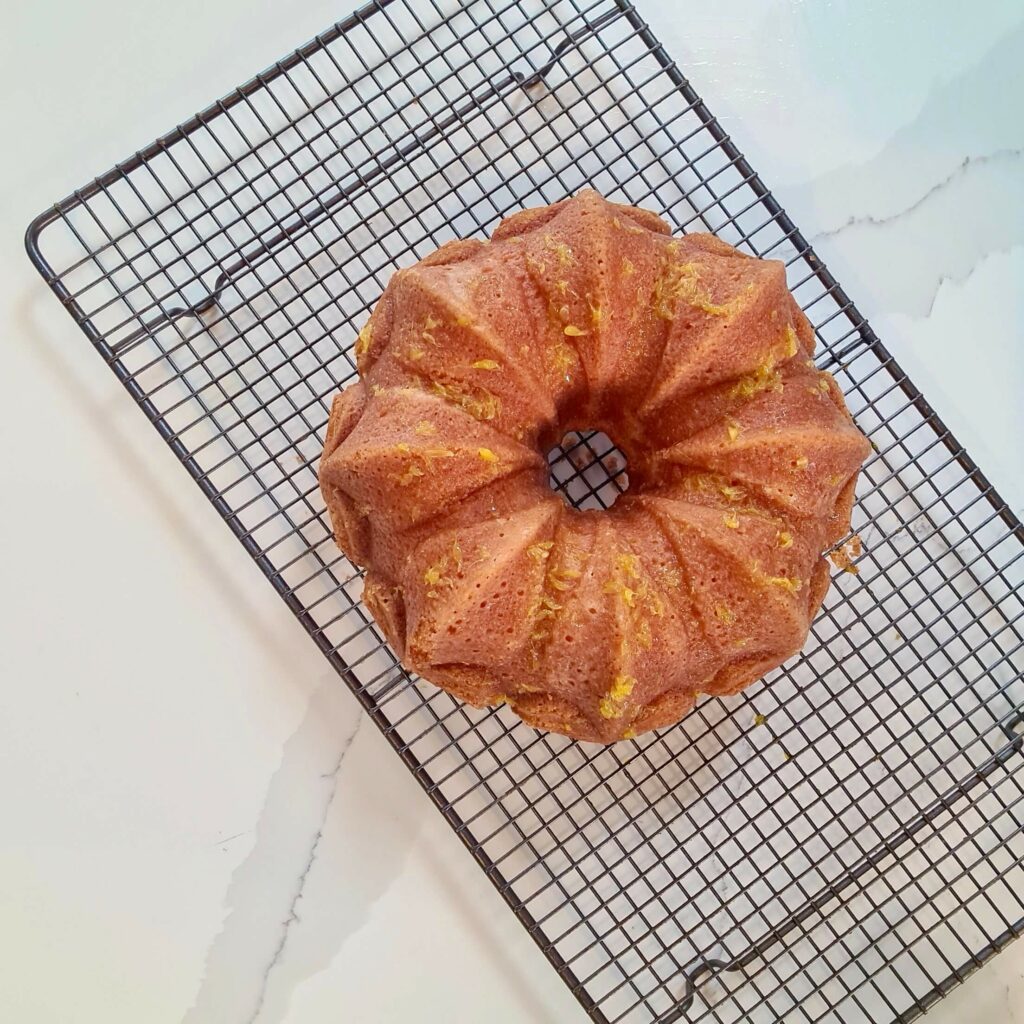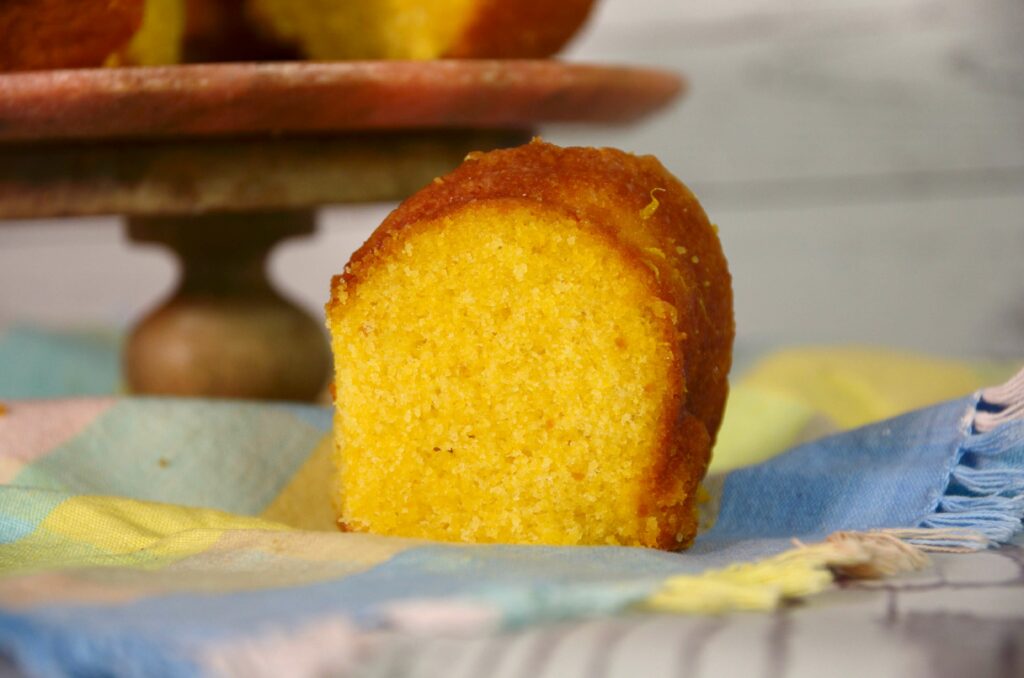Brazilian Corn Cake
Cake for breakfast? Well yes, actually! I wanted to include a cake in our jaunt around the world that is served up at breakfast time, perfect with a nice strong coffee and some fresh fruit. And we no look no further than Brazil.
The Bolo de Fuba is a traditional breakfast cake (although in truth it also makes for a great tea time cake too) made from finely ground cornmeal. It is ubiquitous in Brazil and is eaten during festival days such as the Festas Juninas, but even more commonplace at breakfast or with a midday coffee. It is a delicious, crumbly, melt in the mouth cake, fragrant with the scent of corn and an ideal munch for ‘breaking the fast’.

A traditional much used ingredient in Brazilian cooking, the corn used in this cake is a finely ground cornmeal or polenta. Corn based foods are very common in Brazil, dating from a time when wheat was not a crop that was particularly available..corn and cornmeal provided the staple carbohydrate for many recipes. Corn is easy to grow even in poor soil and in the tradition of ancient Native American cooking, ground corn meal can be combined with fat and water to make a basic bread. So whilst filling, this original corn bread was not the most tasty. Over time however home cooks added ingredients such as eggs, molasses and leveners to create something that is more cake-like in consistency and much tastier to eat. The difference between cornbread and corn cake is not too extreme in fact.. An omission of sugar and an addition of cheese will turn this recipe into a savoury one fairly easily.
Corn Cake V Corn Bread
A traditional much used ingredient in Brazilian cooking, the corn used in this cake is a finely ground cornmeal or polenta. Corn based foods are very common in Brazil, dating from a time when wheat was not a crop that was particularly available..corn and cornmeal provided the staple carbohydrate for many recipes. Corn is easy to grow even in poor soil and in the tradition of ancient Native American cooking, ground corn meal can be combined with fat and water to make a basic bread. So whilst filling, this original corn bread was not the most tasty. Over time however home cooks added ingredients such as eggs, molasses and leveners to create something that is more cake-like in consistency and much tastier to eat. The difference between cornbread and corn cake is not too extreme in fact.. An omission of sugar and an addition of cheese will turn this recipe into a savoury one fairly easily.

The modern bola di fuba is a sweet moist cake made with ground corn, cream, eggs and sugar. It is traditionally baked in a ring mould (bolo) and served plain without much adornment other than a dusting of sugar or a simple sugar syrup.
And whilst you may think that a cornmeal cake could be dry..this is quite the opposite. A moist cake made fluffy and soft by the addition of cream, coconut milk, buttermilk or even condensed milk.
Variations
Whilst researching this cake It appears that this basic recipe ( for yes it is a doddle and a delight to make) is one that many adapt and play with. Most families in Brazil seem to have their own personal take on the recipe. The most common variation is to make this already moist cake ‘ bem cremosa’ or extra creamy. This is achieved by adding in grated coconut or wait for it…. grated parmesan for extra richness. It is also common to see it paired with a guava paste, exotic fennel for an aniseed twist or covered in a citrus syrup like I have done in this recipe.
Corn cakes are not exclusive to Brazil though. In Portugal and Italy cakes made with ground polenta are common. Flavoured with lemon or enhanced with ground almond, corn cakes are the ideal ready made gluten free option. They are rustic cakes, made with few ingredients and sometimes only raised by whipped egg whites rather than the addition of more modern leaveners.

At its heart, the Bolo de Fuba is a plain beauty. What I call a real “bread and butter” type cake..free of fancy adornment and so commonplace in Brazilian culture it is found in every bakery and even in ready mix, box form at the supermarkets there. However it is SO easy to make I urge you to give it a go. Breakfast will never be the same again!
RECIPE
FOR THE CAKE
Fine Polenta or Corn Meal 190g
Sifted Plain Flour 190g
Golden Caster Sugar 340g
Baking Powder 3 ¾ tsp
Salt 1.2 tsp
Organic Eggs 3
Double Cream 180ml
Warm Water 180ml
Groundnut oil 180ml
Orange Zest from 2 oranges
FOR THE ORANGE SYRUP
Juice of 2 oranges
100g icing or fine whit caster sugar
KIT NEEDED
Electric Whisk or Cake Mixer
10 inch Bundt Cake Tin
INSTRUCTIONS
Preheat the oven to 160C/ 325F.
Use a cake mixer with a paddle attachment if you have one, otherwise a handheld electric mixer is fine.
Prepare your bundt tin well to make sure the cake doesn’t stick. Line it with cake release spray or oil and flour.
In your cake mixer combine the flour, polenta, sugar, baking powder, salt and add in the orange zest. Mix until well combined.
In a jug combine all the wet ingredients and then with the mixer turning slowly pour in the wet ingredients to the dry.
Mix until combined but do not over mix. The batter will be quite liquid but this is fine. Pour into the prepared bundt tin and bake in a preheated oven for 50 – 55 minutes.
Remove from the oven, place on a rack and allow to cool in the tin for 20 minutes before turning out and allowing to cool completely.
To make the syrup dissolve the sugar and orange juice in a pan over the heat until a little syrupy. Allow to cool for a few minutes. Make some holes in the cake with a cocktail stick to allow the syrup to soak in. Carefully spoon the syrup over the cooled cake and allow to sit for a couple of hours before serving.
Prefer to watch the video? Click below

